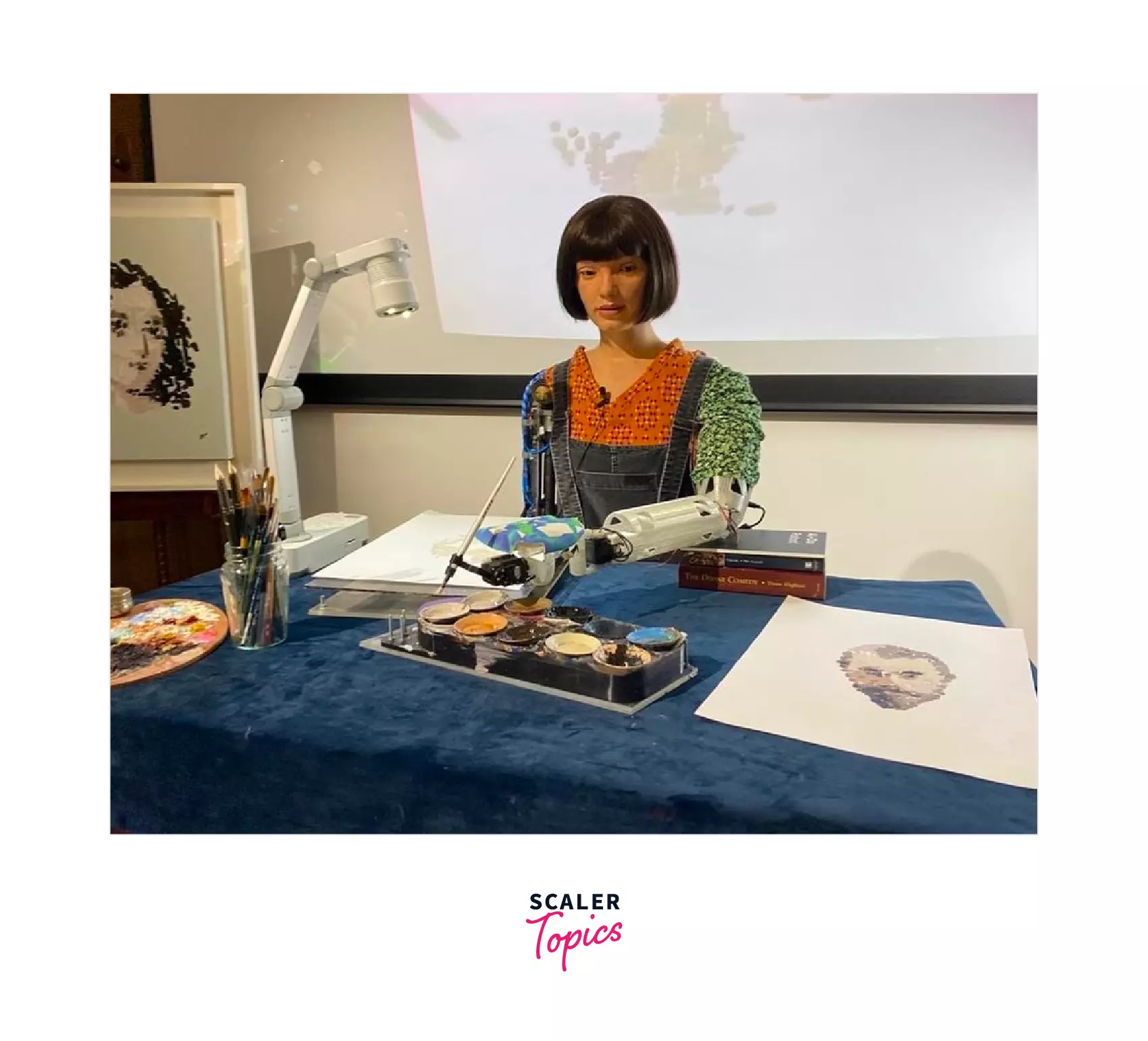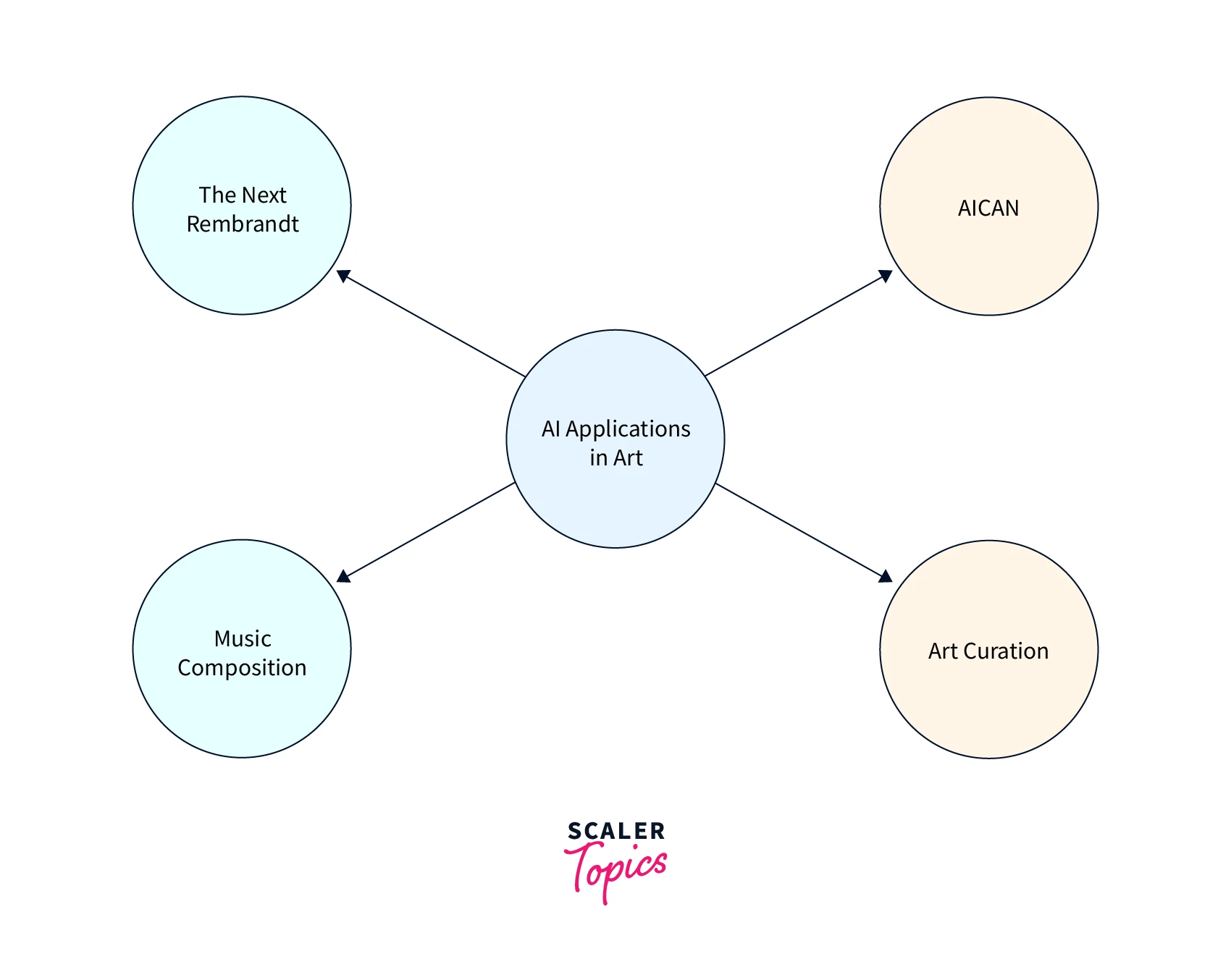AI in Art
Overview
Art is an expression of human creativity, and it has evolved over the centuries, with artists continuously seeking new ways to push the boundaries of imagination and creativity. In recent years, artificial intelligence (AI) has become an increasingly important tool for artists, providing new avenues for creative expression and enabling them to explore new realms of artistic possibility. This article explores the scope and applications of AI in art, highlighting the top models and tools artists use to augment their creativity.
Introduction
Art has always reflected human creativity, with artists exploring new ways to express their ideas and emotions. The introduction of AI in art has opened up a new world of creative possibilities, allowing artists to push the boundaries of imagination and create visually stunning and emotionally engaging art. AI has the potential to support and augment human creativity, providing artists with new tools and processes to create innovative and unique works of art.
What is AI in Art?
AI in art refers to the use of artificial intelligence technologies to create, analyze, and interpret works of art. AI has the potential to automate certain aspects of the artistic process, such as generating ideas, selecting colours, and creating patterns, while also providing new tools and processes for artists to explore. AI can also assist in analyzing and interpreting works of art, providing new insights into the creative process and enhancing our understanding of the artistic experience.
Tools and Processes
AI in art is not limited to one specific tool or process. Instead, different tools and processes are combined to create or augment art.
These tools and processes fall into four main categories:
- Machine learning algorithms
- Natural Language Processing (NLP)
- Computer Vision (CV)
- Generative Adversarial Networks (GANs)
These technologies enable artists to generate new ideas, create unique works of art, and explore new forms of expression. AI tools and processes can also enhance the traditional artistic process, such as painting or sculpting, by providing new insights and approaches to the creative process.
AI tools and processes can also be used to create interactive art installations, such as the AI-powered robot artist Ai-Da. Ai-Da, developed by the University of Oxford, is a humanoid robot that is capable of creating original artworks using a combination of AI algorithms and human supervision.

Ai-Da's art is generated through a combination of computer vision, natural language processing, and machine learning techniques, making her a truly unique example of AI in art.
Computational Creativity in Music
AI has been used extensively in music to create computational creativity, generate music compositions, and aid in music production. , For example,, AI algorithms can analyze existing musical compositions, identify patterns, and generate new compositions that follow the same patterns.
This has led to the creation of new musical genres and styles and the development of AI-assisted music production tools that enable artists to create unique and innovative works of music.
Computational Creativity in Visual Arts
Computational Creativity in Visual Arts is a rapidly evolving field that combines traditional art techniques with the power of artificial intelligence. It has revolutionized the way we approach art and has given rise to new forms of digital art that would have been impossible just a few decades ago.
By leveraging machine learning algorithms and deep neural networks, artists can create new and innovative forms of digital art that would be difficult or impossible to achieve through traditional methods.
One of the most promising areas of Computational Creativity in Visual Arts is the use of generative adversarial networks (GANs) to create new and innovative forms of digital art. GANs are a type of deep learning algorithm that can generate new and original images by learning from a large dataset of existing images. This has led to the creation of some truly stunning pieces of art, including realistic portraits, landscapes, and abstract compositions.
Supporting and Augmenting Human Creativity
AI in art has the potential to support and augment human creativity in various ways. One example is the use of AI to create personalized art. AI algorithms can analyze people's preferences and create art that suits their tastes. This type of personalized art can be used for home decor, marketing campaigns, or gifts.
Another example is the use of AI to help artists overcome creative blocks. AI tools can analyze an artist's work and suggest new ideas, styles, and techniques to try. This can help artists push beyond their comfort zones and explore new avenues for creative expression.
AI can also automate certain aspects of the artistic process, such as colour selection or composition. This can free up an artist's time and mental energy to focus on the more creative aspects of their work.
Top AI Models for AI in Art
There are various AI models used in AI art, including
-
Generative Adversarial Networks (GANs): Type of machine learning algorithm used to generate images. They consist of two neural networks: a generator network that creates images and a discriminator network that evaluates them. The two networks are trained in adversarial training, where the generator learns to create images that fool the discriminator.
-
Variational Autoencoders (VAEs): Another type of machine learning algorithm used to generate images. They work by encoding an input image into a low-dimensional vector, which is then decoded back into an image. The output image is similar to the input image but with variations.
-
Deep Dream: An image generation technique that uses a neural network to create dream-like images. It works by feeding an image into a neural network and adjusting the image based on the activations of the network's neurons. This creates a hallucinogenic effect, where the image becomes distorted and surreal.
Applications of AI in Art
AI has found numerous applications in the field of art, leading to the creation of new art forms and possibilities.
Here are some real-life examples and use cases of AI in art:

-
The Next Rembrandt: In 2016, ING Bank teamed up with an advertising agency and a group of data scientists to create a new Rembrandt painting using AI. The painting was based on Rembrandt's style and technique and was created using data collected from his paintings.
-
AICAN: Rutgers University developed an AI program called AICAN, which can generate an entirely new work of art. The program has learned from over 80,000 images and can create original pieces based on the patterns it has learned.
-
The Robot Art Competition: The Robot Art Competition is an annual event where robots compete to create art pieces using AI. The robots use deep learning algorithms to create their art, and the competition has seen some truly impressive art pieces.
-
Music Composition: AI is also used to create music. Amper Music is an AI-based platform that can create original music based on user preferences. The platform can create music for various purposes, from advertisements to film soundtracks.
-
Art Curation: AI is also used to curate art exhibitions. The Art Museum of the University of Tokyo used an AI program called AI Towako to curate an exhibition of Japanese art. The program was trained on the museum's database of art and was able to suggest new connections between different pieces.
Conclusion
- AI has the potential to support and enhance human creativity by providing new tools and processes to create innovative and unique works of art.
- AI tools and processes fall into four main categories: machine learning algorithms, NLP, CV, and GANs.
- The top AI models used in AI art are GANs, VAEs, and Deep Dream.
- AI has been used extensively in music to create computational creativity and in visual arts to create new art forms and enhance traditional photography techniques.
